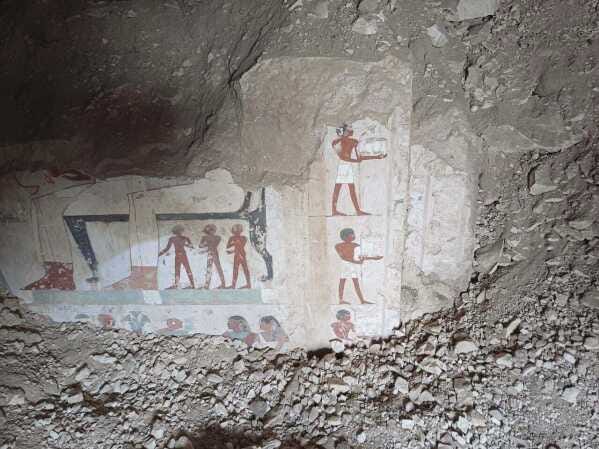Three tombs in Luxor discovered by Egyptian archaeologists
Latest News
Reported by the Associated Press:
CAIRO (AP) — Egypt unveiled three new tombs of prominent statesman in the Dra Abu al-Naga necropolis in Luxor, officials said Monday.
Egyptian archaeologists have discovered tombs dating back to the New Kingdom period (1550–1070 B.C.) and identified the names and titles of their owners through inscriptions found within, according to a statement by the tourism and antiquities ministry.
Mohamed Ismail Khaled, secretary-general of the Supreme Council of Antiquities, said in the statement that further study of other tombs’ inscriptions is needed to gain a deeper understanding of the tombs’ owners.
The ministry released pictures of items discovered in the tombs, including artifacts and statues. The discovery comes in the lead-up to the highly anticipated full opening of the Grand Egyptian Museum, which is expected this summer, though a final official date is yet to be confirmed. The museum will showcase more than 100,000 artifacts from Egypt’s rich ancient heritage.
One of the tombs discovered in Luxor on Monday belonged to Amum-em-Ipet, from the Ramesside period, who worked in the estate of Amun. His tomb was mostly destroyed and what remained were depictions of the funeral furniture carriers and a banquet.
Amum-em-Ipet’s tomb begins with a small courtyard leading to an entrance and then a square hall ending with a niche, whose western wall was destroyed.
The other tombs date back to the 18th Dynasty and include one belonging to a man named Baki, who served as a supervisor of the grain silo. Another tomb contains the burial of an individual named “S,” who held multiple roles — he was a supervisor at the Temple of Amun in the oasis, a writer and the mayor of the northern oases.
Baki’s tomb has a courtyard leading to the main entrance of the tomb as well as a long corridor-like courtyard. It also has a transverse hall leading to another longitudinal hall that leads up to an unfinished chamber that contains a burial well.
Read more here.



